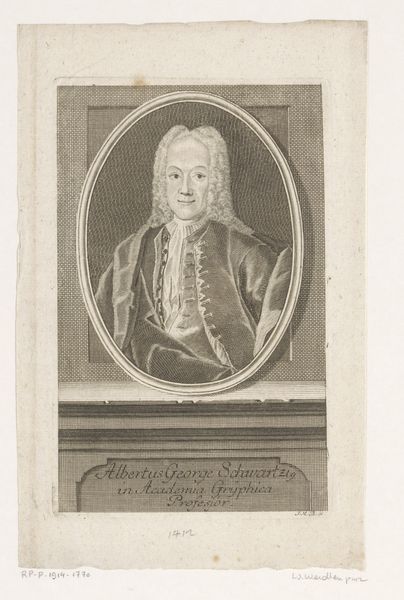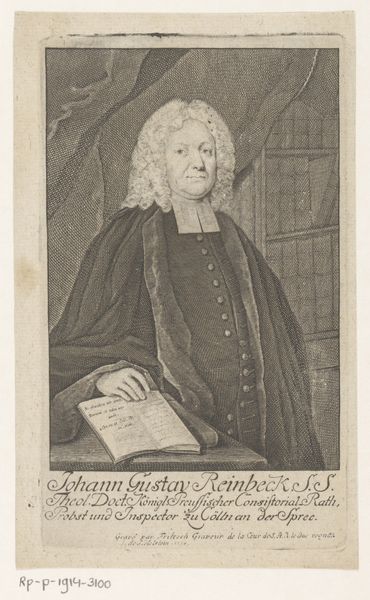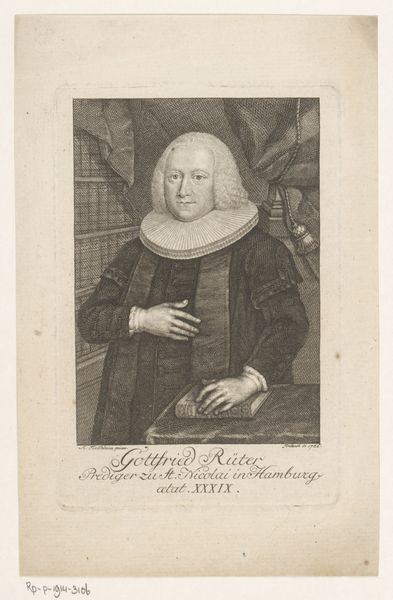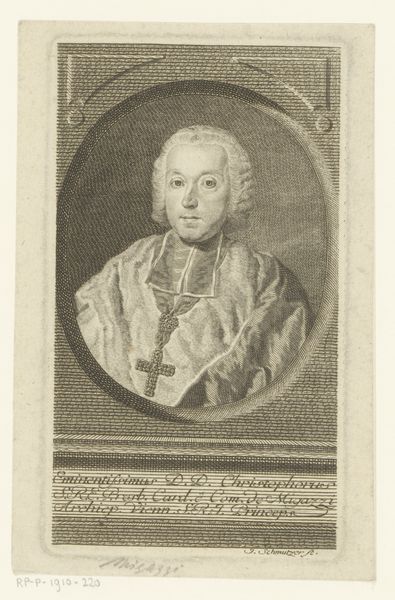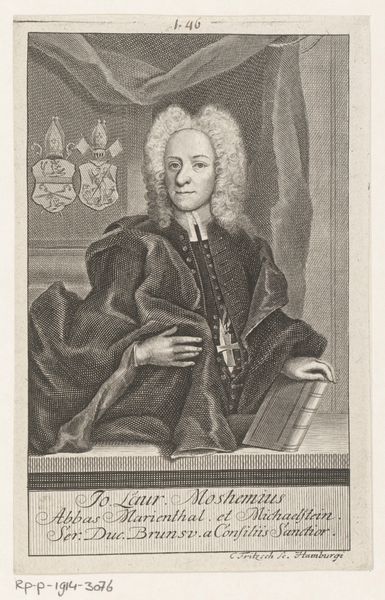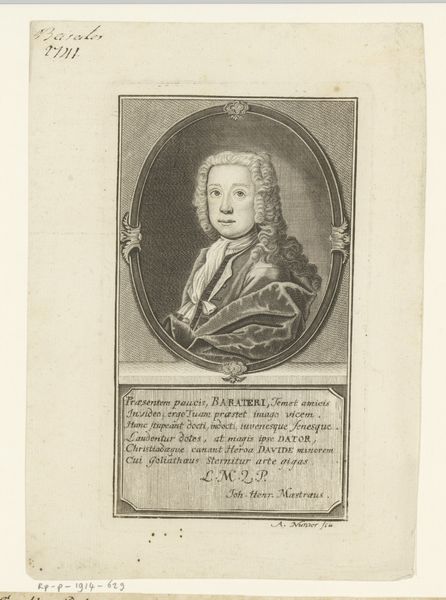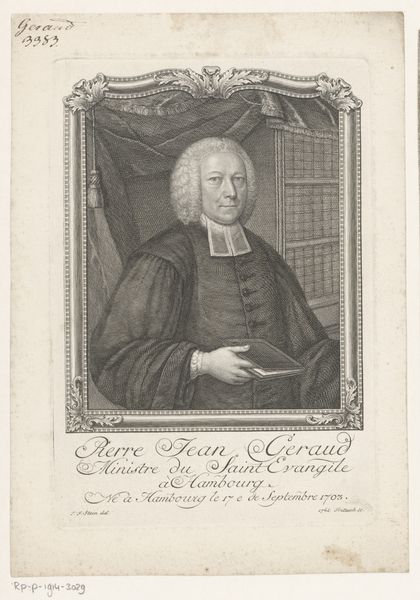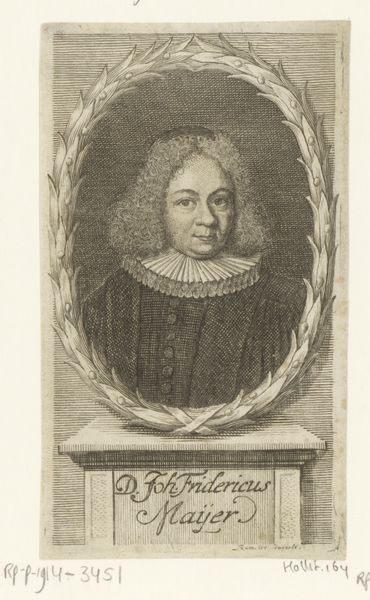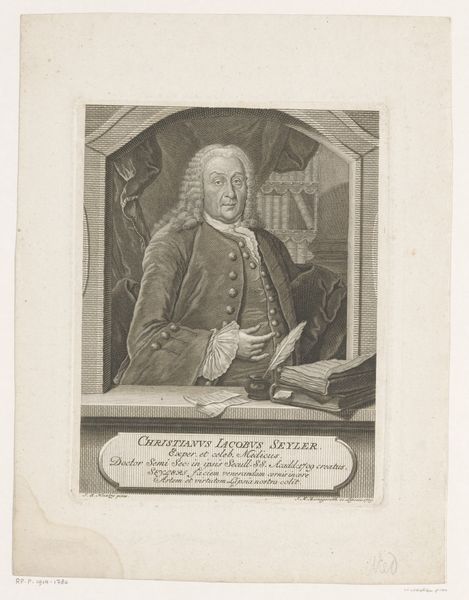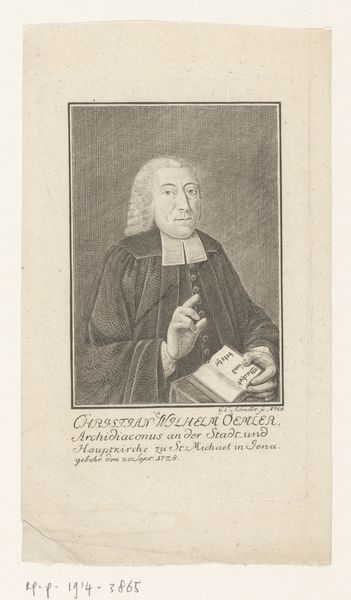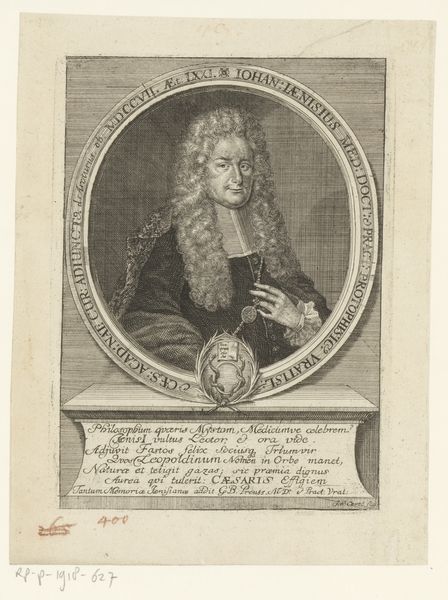
#
pencil drawn
#
aged paper
#
light pencil work
#
photo restoration
#
pencil sketch
#
old engraving style
#
personal sketchbook
#
old-timey
#
sketchbook drawing
#
pencil work
Dimensions: height 152 mm, width 99 mm
Copyright: Rijks Museum: Open Domain
Editor: So, here we have Christian Fritzsch’s 1745 portrait of Adolph Christoph von Aken, currently at the Rijksmuseum. It has a delicate, almost ethereal quality, being a pencil sketch. What strikes me is the direct gaze, a very controlled presentation of power. What do you make of this piece? Curator: It’s fascinating how portraiture like this functions as a visual construction of power, isn't it? Consider the subject's attire, the wig, and the suggestion of a grand interior. These aren’t simply aesthetic choices; they are deliberate markers of social standing in 18th-century Europe, during the Enlightenment. How do we read these symbols of aristocracy today? Are they neutral, or do they still carry the weight of historical inequality? Editor: I hadn’t really considered the inequality aspect so directly. I saw it more as a straightforward depiction of a powerful individual. Curator: Exactly. And that’s the point. Portraits like these often worked to normalize and legitimize hierarchies. Think about who had access to commissioning art, and whose stories were being told. The Enlightenment valued reason and progress, but for whom was this progress intended? And who was left out of the picture, quite literally? Do you see any clues within the image, beyond the obvious displays of wealth and status, that might hint at a more nuanced story, a possible critique, or even resistance? Editor: It's making me rethink the bookcase detail now. Maybe the books aren’t just props, but signify the access to knowledge, exclusive for some people like von Aken. Curator: Precisely. Considering the religious titles named below Adolph Christoph’s name, this image opens avenues to talk about religious authority, access to knowledge and cultural capital. Thinking critically about the sitter’s social positioning allows a dialogue between past and present. Editor: That’s given me so much to consider. It’s more than just a portrait; it's a window into the complex power structures of the time. Curator: Indeed. And our job as viewers is to keep questioning what that window reveals, and whose voices we might be missing.
Comments
No comments
Be the first to comment and join the conversation on the ultimate creative platform.
